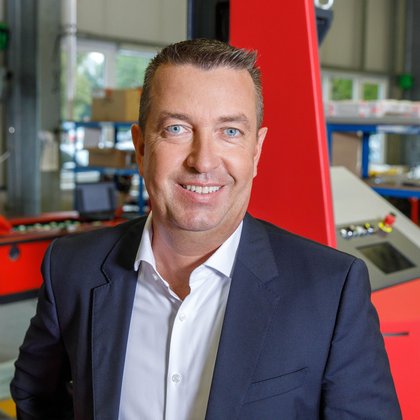Wolfgang Hillinger, Managing Director of DS Automotion and member of the board of the VDMA was interviewed by Mathis Bayerdörfer, editor-in-chief of the magazine ROBOTIK UND PRODUKTION on the topic of VDA 5050 and its application in industry also alternatives and other interfaces were discussed.
Share article
How great is the benefit of VDA5050 from your point of view? To what extent have you implemented the interface in your portfolio?
The VDA5050 is particularly beneficial for the user in terms of independence and flexibility. On the supplier side, we naturally do not want to ignore this and have converted our entire portfolio to VDA5050. Of course, we will continue to develop this open source compatibility.
Has the standard really arrived in the industry? Is there still a lot of need for clarification on the user side?
The VDA5050 has arrived on the market. But both perception and acceptance will of course still go through a certain process. It was clear from the beginning that harmonization among so many suppliers with very different architectures would not be an easy undertaking. Many customers - large and small - have little idea of the complexity behind this standardization. But there is no need for that. The concrete features are also secondary for the time being. It is much more important to recognize the relevance of mobile robotics and the idea behind VDA5050. So when customers are currently considering the purchase of an AGV/AMR, the vast majority are already looking to the future to see whether the standard is supported - in order to be secure and flexible. In this way, they are already buying a piece of independence for the future.
To what extent are your customers already using VDA5050? In practice, how often do you already encounter "mixed" fleets or AGV solutions that integrate different manufacturers via the interface?
VDA5050 is already being actively demanded by the major European OEMs. Apart from a few lighthouse projects, however, there is usually still little need to assemble an overall system from the components of several manufacturers. Instead, users want to be sure today that later extensions are possible regardless of the manufacturer.
Which areas are well covered by VDA5050, where is there still a need for adaptations or further developments? To what extent can/must the interface respond to upcoming trends and new technologies?
An important addition that is already on its way is the so-called Layout Interchange Format, or LIF for short. The need for this arose with the first projects in which fleet managers and AGVs from different manufacturers were integrated into one system. It is a question of the format and quality in which the various subsystems exchange layout information with each other. This substandard will be published very soon, probably in the fall, as an additional component of VDA5050.
In addition, the VDMA working group is currently defining a role model to guide the user. It specifies which manufacturer to contact in the event of implementation problems, how to measure availability, and how to obtain comprehensive CE certification. There is also the question of what happens to the warranty, etc., if the user changes the system during operation or integrates other manufacturers. But rules are still being formulated for these aspects as well.
Does the VDA5050 have the potential to establish itself as a global interface? Are there competitors from other regions of the world, e.g. Asia?
The VDMA wants to roll out and implement the standard globally. However, the driving force behind VDA5050 has so far been the automotive industry in Europe, followed by Tier1 and Tier2 suppliers. Only if more globally active stakeholders join in in the future will the VDA5050 really be rolled out around the world. Since the standard has so far been developed entirely within the VDMA, only companies that belong to the association can actively participate. This will soon change. The development of VDA5050 will be outsourced to a working group. As before, this will be under the auspices of the association. But in this way, companies that are not members will also be able to work on the standard. This is ultimately a very important step towards establishing VDA5050 globally.
Are there other standards or interfaces alternative or supplementary to VDA5050 that you as a supplier take into account and implement?
Another interesting approach from our point of view is the North American initiative Mass Robotics. It has recognized the need for harmonization in mobile robots in the same way, but is pursuing a different concept: In contrast to VDA5050, it is not about a universal interface, but about a higher-level system layer in which the driving courses of AMRs are managed. I can also imagine this for DS Automotion in the future.
